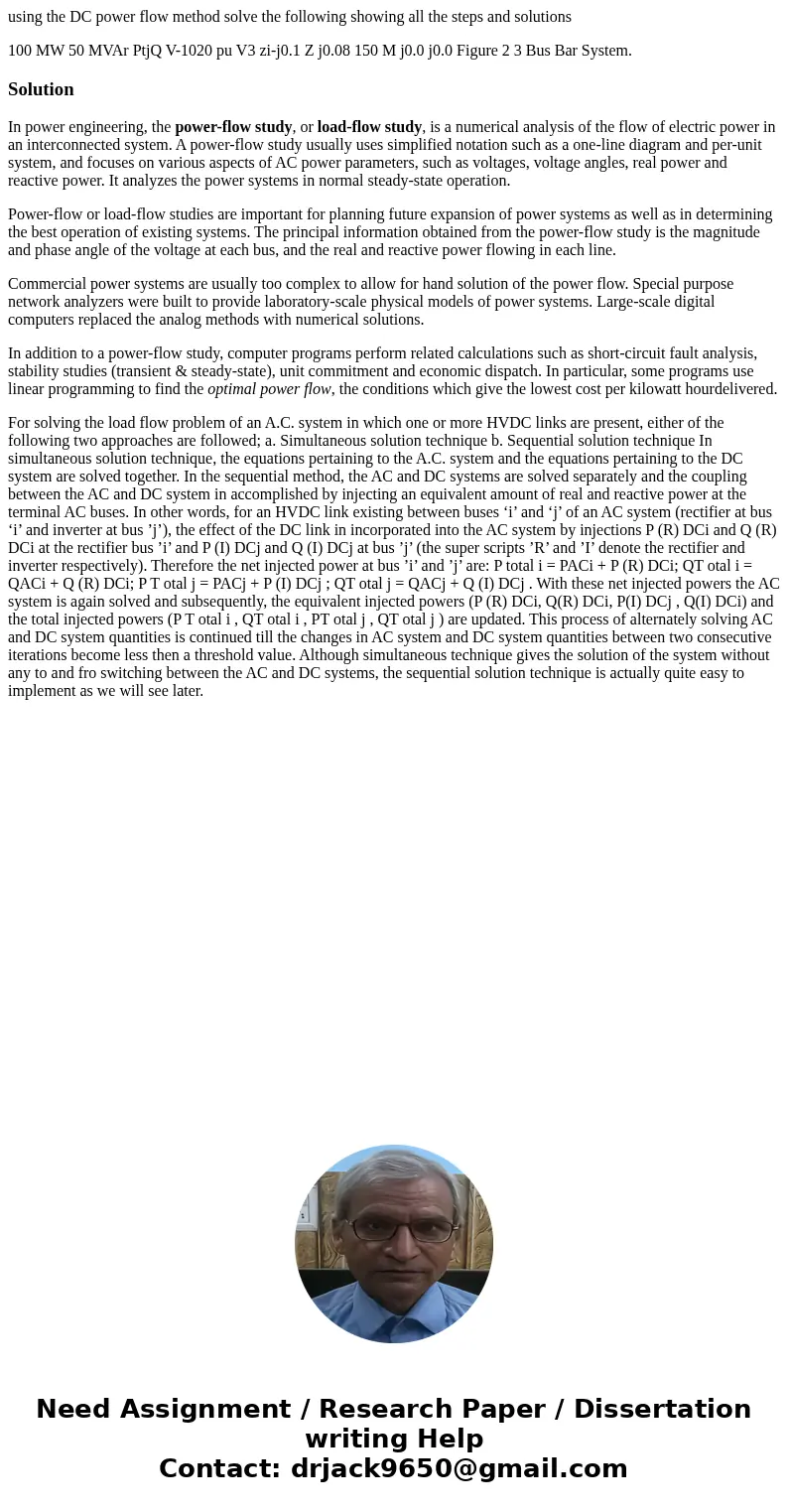using the DC power flow method solve the following showing a
using the DC power flow method solve the following showing all the steps and solutions
100 MW 50 MVAr PtjQ V-1020 pu V3 zi-j0.1 Z j0.08 150 M j0.0 j0.0 Figure 2 3 Bus Bar System.Solution
In power engineering, the power-flow study, or load-flow study, is a numerical analysis of the flow of electric power in an interconnected system. A power-flow study usually uses simplified notation such as a one-line diagram and per-unit system, and focuses on various aspects of AC power parameters, such as voltages, voltage angles, real power and reactive power. It analyzes the power systems in normal steady-state operation.
Power-flow or load-flow studies are important for planning future expansion of power systems as well as in determining the best operation of existing systems. The principal information obtained from the power-flow study is the magnitude and phase angle of the voltage at each bus, and the real and reactive power flowing in each line.
Commercial power systems are usually too complex to allow for hand solution of the power flow. Special purpose network analyzers were built to provide laboratory-scale physical models of power systems. Large-scale digital computers replaced the analog methods with numerical solutions.
In addition to a power-flow study, computer programs perform related calculations such as short-circuit fault analysis, stability studies (transient & steady-state), unit commitment and economic dispatch. In particular, some programs use linear programming to find the optimal power flow, the conditions which give the lowest cost per kilowatt hourdelivered.
For solving the load flow problem of an A.C. system in which one or more HVDC links are present, either of the following two approaches are followed; a. Simultaneous solution technique b. Sequential solution technique In simultaneous solution technique, the equations pertaining to the A.C. system and the equations pertaining to the DC system are solved together. In the sequential method, the AC and DC systems are solved separately and the coupling between the AC and DC system in accomplished by injecting an equivalent amount of real and reactive power at the terminal AC buses. In other words, for an HVDC link existing between buses ‘i’ and ‘j’ of an AC system (rectifier at bus ‘i’ and inverter at bus ’j’), the effect of the DC link in incorporated into the AC system by injections P (R) DCi and Q (R) DCi at the rectifier bus ’i’ and P (I) DCj and Q (I) DCj at bus ’j’ (the super scripts ’R’ and ’I’ denote the rectifier and inverter respectively). Therefore the net injected power at bus ’i’ and ’j’ are: P total i = PACi + P (R) DCi; QT otal i = QACi + Q (R) DCi; P T otal j = PACj + P (I) DCj ; QT otal j = QACj + Q (I) DCj . With these net injected powers the AC system is again solved and subsequently, the equivalent injected powers (P (R) DCi, Q(R) DCi, P(I) DCj , Q(I) DCi) and the total injected powers (P T otal i , QT otal i , PT otal j , QT otal j ) are updated. This process of alternately solving AC and DC system quantities is continued till the changes in AC system and DC system quantities between two consecutive iterations become less then a threshold value. Although simultaneous technique gives the solution of the system without any to and fro switching between the AC and DC systems, the sequential solution technique is actually quite easy to implement as we will see later.

 Homework Sourse
Homework Sourse